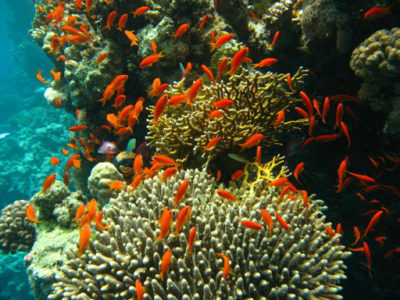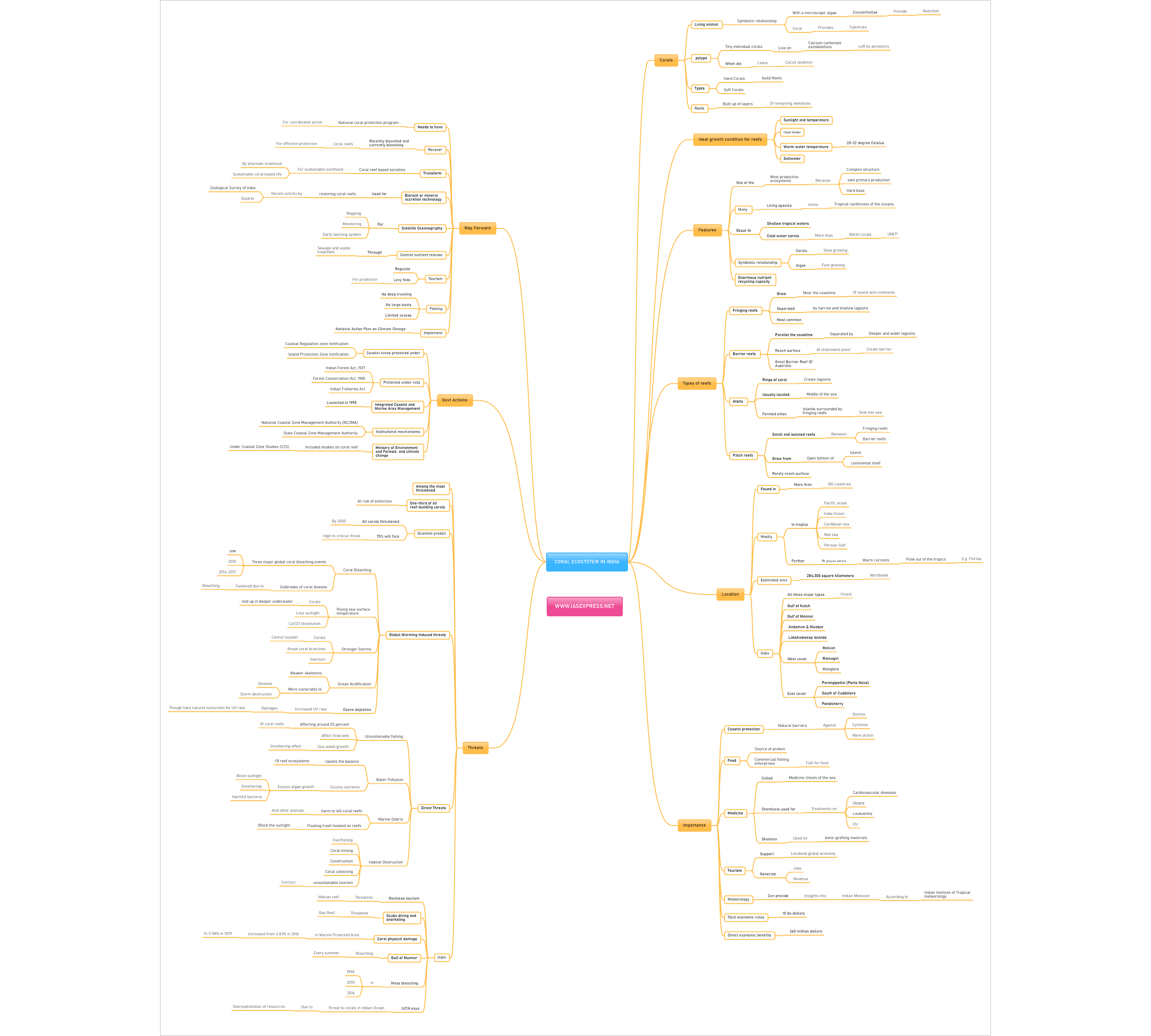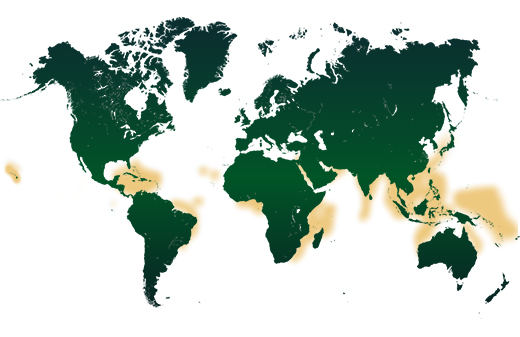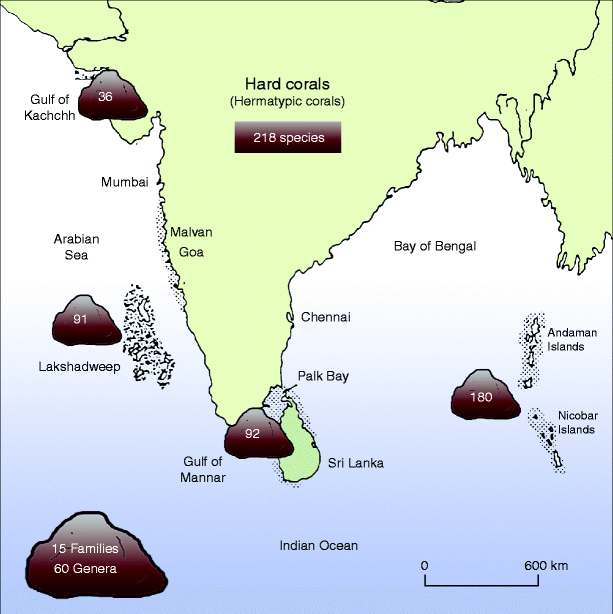Coral Ecosystem in India: Importance, Distribution, threats, Way Forward

Coral Reefs are one of the most dynamic ecosystems of India. The coral reefs not only provide sanctuary to a myriad of marine life but also play a key role in protecting the coastline from erosion. In recent times, due to global warming and other reasons, coral ecosystems worldwide have been under threat. The global environment protection efforts give high importance to the coral ecosystem and research to protect them. Recently one such research by the University of Queensland, Australia revealed that dead corals are as important as live corals as more life can be supported by dead coral remains than live corals.
This topic of “Coral Ecosystem in India: Importance, Distribution, threats, Way Forward” is important from the perspective of the UPSC IAS Examination, which falls under General Studies Portion.
What are Corals?
- Coral is a living animal that has a symbiotic relationship with a microscopic algae named “Zooxanthellae” which live on corals.
- There are the following types of corals: Hard Corals and Soft Corals. Only Hard Corals build Reefs.
- The coral polyps are tiny individual corals that live on the calcium carbonate exoskeletons of their ancestors. As polyps live, thrive, and die they leave behind their calcium carbonate skeleton.
- So, Coral reefs are built up of layers of these remaining skeletons covered by living polyps.
- The Zooxanthellae algae assists the coral in nutrition by providing it with fixed carbon compounds through photosynthesis. Corals use these carbon compounds for energy, enhancing calcification, etc.
- In return, Corals provide a stable substrate for zooxanthellae to grow. Also, Corals get their beautiful colors from the zooxanthellae algae.
What are the ideal growth conditions for Coral reefs?
For reef-building Corals, the ideal conditions are
Sunlight and temperature
Corals need to grow in shallow water as sunlight is important for growth. Corals depend on the zooxanthellae (algae) that need sunlight to survive.
Clean Water
Corals need clear water as clean water lets sunlight through. They don’t thrive well in opaque water. Also, Sediment and plankton can cloud water, decreasing sunlight exposure.
Warm water temperature
- Reef-building corals need warm water to survive. Different corals living in different regions can withstand various temperatures fluctuations.
- The Most favorable temperature range for the growth of corals is 20-32 degrees Celcius. In any case, reef-building corals cannot tolerate temperature below 18 degrees Celcius.
Saltwater
- Corals need saltwater and a certain balance in the ratio of salt to water to survive. This is why corals don’t live in areas of estuaries.
What are the salient features of Corals?
- Coral reefs are one of the most productive ecosystems due to their complex structure, own primary production, hard base which acts as a substrate. So, they are one of the high bio-diversity areas on Earth.
- In a coral reef ecosystem, invertebrates, vertebrates, plants, and other life live in close association with the corals with very efficient resource recycling and coupling making it a highly productive and diverse ecosystem.
- Corals reefs are called the tropical rainforests of the oceans due to their high biodiversity and productivity.
- They occur in shallow tropical waters where seawater is clear, clean, and warm.
- There are cold-water corals also which inhabit deep, cold water. According to the united nations Environment Programme, there are more cold-water corals reefs worldwide than tropical reefs. The largest cold-water reef is the Rost reef off Norway.
- In the symbiotic relationship they live in, corals are generally slow-growing colonies of animals while the zooxanthellae algae are fast–growing.
- The enormous nutrient recycling capacity of corals helps them grow in nutrient-poor waters.
What are the types of Coral reefs?
Fringing reefs
Fringing reefs grow near the coastline of islands and continents. They are separated from the shore by narrow and shallow lagoons. These are the most common type of reef around the world
Barrier reefs
Barrier reefs parallel the coastline like fringing reefs but are separated by deeper and wider lagoons. At their shallowest point, they reach the water’s surface forming a “barrier” to navigation. E.g. The Great Barrier Reef in Australia
Atolls
Atolls are rings of coral that create lagoons. They are usually located in the middle of the sea. Atolls form when islands surrounded by fringing reefs sink into the sea. The fringing reefs continue to grow and eventually form circles with lagoons inside.
Patch reefs
Patch reefs are small and isolated reefs usually occur between fringing reefs and barrier reefs and grow from the open bottom of the island or continental shelf. They rarely reach the surface.
Where are the Coral reefs located?
- Coral reefs are found in around 100 countries around the world or even more. Most reefs are located between the Tropics, in the Pacific and Indian Ocean, the Caribbean Sea, the Red Sea, and the Persian Gulf.
- Corals are also found farther in places where warm currents flow out of the tropics, such as in Florida and southern Japan.
Coral reefs cover an estimated 284,300 square kilometers worldwide.
Where are Coral reefs located in India?
- India with its coastline of 7,517 km and subtropical climatic conditions has coral reef areas along its coastline and islands.
- All the three major reef types, atoll, fringing, and barrier, occur in India.
- In India, Coral reefs are present in the areas of Gulf of Kutch, Gulf of Mannar, Andaman & Nicobar, Lakshadweep Islands, and Malvan.
- The Gulf of Kutch in the northwest, which has some of the most northerly reefs in the world) and Palk Bay and the Gulf of Mannar in the southeast.
- Coral patches are found in Ratnagiri, Malvan, and Redi, south of Bombay and at the Gaveshani Bank, west of Mangalore.
- Corals along the shore are found at Quilon on the Kerala coast to Enayem in Tamilnadu.
- Corals also occur on the east coast between Parangipettai (Porto Novo), south of Cuddalore, and Pondicherry.
- Among island corals, in Andaman and Nicobar Islands (Fringing and barrier) and Lakshadweep (Atolls) corals are found.
What is the importance of Coral Reefs?
The importance of coral reefs are as follows:
Coastal protection
- Healthy reefs act as natural barriers, protecting coastal areas and beaches from strong ocean waves.
- Without coral reefs, many beaches and buildings become vulnerable to wave and storm damage. With more frequent storms due to climate change, these coastal protection services will become even more important.
- In the tsunami of December 2004, some coastlines were protected from severe damage because of healthy reefs.
Food
- Reef fish are a source of protein for a billion people, especially for those living near reefs.
- Some commercial fishing enterprises also depend on coral reefs and surrounding fish species.
Medicine
- Coral reefs are called the medicine chests of the sea. Some creatures found on reefs produce compounds that have been used for human applications
- Several treatments for diseases like cardiovascular diseases, ulcers, Leukaemia, etc from chemicals in reef plants and animals.
- Coral’s unique skeletal structure has been used for making bone-grafting materials.
Tourism
- Healthy reefs support local—and global—economies. The tourism industry and fisheries, coral reefs generate billions and provide jobs for millions around the world.
- Countries with coral reef industries get most of the gross national product from them.
- A study estimated the value of coral reefs at $10 billion and direct economic benefits of $360 million per year.
Meteorology
A recent study by the Indian Institute of Tropical meteorology has stated that corals found in the North Indian ocean had the potential to provide new insights into the onset and withdrawal of the Indian Monsoon until a few hundred years ago.
What are the threats to the coral ecosystem?
- Coral reefs though being one of the most diverse ecosystems are among the most threatened.
- Coral reefs face multiple stressors at different scales. As much as one-third of all reef-building corals are at risk of extinction.
- Scientists predict that all corals will be threatened by 2050 with 75% facing high to critical levels.
Global Warming Induced threats
- As the global warming trends are starkly visible, and our oceans are growing more acidic, threats to coral reefs are increasing.
Coral Bleaching
- Most corals have a narrow temperature tolerance. Coral bleaching when corals are stressed due to warmer ocean waters.
- Corals eject the symbiotic algae that live inside them when stressed. When corals lose their algae, they lose their built-in food source.
- Scientists have recognized three major global coral bleaching events in 1998, 2010, and 2014-2017.
- The most recent event was the longest and most widespread ever recorded, killing two-thirds of the corals in Australia’s Great Barrier Reef.
- Outbreaks of coral disease follow bleaching events as the stressed corals are susceptible to infection.
- According to IPCC, with an additional half-degree warming above today’s level, tropical coral reefs will face very frequent mass mortalities.
Rising sea-surface temperature
As glaciers melt due to global warming, they cause sea levels to rise. consequently, corals end up in deeper underwater, receive less sunlight and grow more slowly.
Stronger Storms
Stronger, more frequent storms, hurricanes, cyclones can break coral branches and overturn coral colonies.
Ocean Acidification
As the oceans absorb CO2, they become more acidic. With increased acidity in the water, coral may form weaker skeletons, be more vulnerable to disease and destruction by storms.
Corals have a natural sunscreen for protection from UV rays radiation but if UV rays level increases, this radiation can damage corals in shallow waters.
Direct Threats
Unsustainable fishing
- Overfishing is a threat affecting around 55 percent of the world’s coral reefs.
- Overharvest of the fish on a reef affects the food web. When fish disappear, the delicate balance of the ecosystem is disrupted, and seaweed-like algae (called macroalgae) can grow unchecked that will smother reefs.
Water Pollution
An overabundance of nutrients in marine environments upsets the balance of reef ecosystems. Excess nutrients promote the growth of algae, which can kill corals by smothering, blocking sunlight, and promoting the growth of harmful bacteria.
Marine Debris
- Marine debris, also known as human trash, can harm or kill coral reefs and the many animals that live in them.
- Floating trash hooked on reefs block the sunlight reefs need.
Habitat Destruction
- Coral reefs are living structures that can take years to regenerate once destroyed.
- Since coral species grow less than an inch per year, reef destruction has a lasting impact.
- Many activities such as Coral mining, construction, Coral collecting, destructive fishing methods, unsustainable tourism affect the habitat and impact coral reefs adversely.
Coral reef threats in India
- Recent studies by the National Institute of Oceanography have shown that Reckless tourism is damaging Malvan’s coral reefs.
- Similar injuries to Goa’s coral reefs are likely due to scuba diving and snorkeling and similar activities.
- The prevalence of coral physical damage in the Marine Protected Area has increased from 4.83% in 2016 to 11.58% in 2019 with cumulated physical damage of 33.08% in the last four years.
- The Gulf of Munnar corals usually bleach in summer if water temperature surpassed 30 degrees Celsius.
- A coral bleaching alert report protocol developed by Spece Application Center (SAC), Ahmedabad recorded that the years 1998, 2010, and 2016 witnessed mass bleaching in the five coral reefs.
- They observed that Andaman, Nicobar, and Gulf of Kutch regions recorded threat in 2010, while the Gulf of Mannar recorded threat in 2016.
- According to the International Union for Conservation of Nature (IUCN), India’s coastal and marine ecosystem along with coral reefs is under increasing threat due to overexploitation of resources.
What are the government actions to protect Coral reefs?
- The government of India seeks to protect, sustain, augment coral reefs in the country by both regulatory and promotional measures.
- Under Coastal Regulation zone notification, and Island Protection Zone notification, corals are sought to be protected by regulating developmental activities along the sea coast.
- The laws that have a bearing on coral reef areas are the Indian Forest Act, 1927, the Forest Conservation Act, 1980, and the Indian Fisheries Act.
- Integrated Coastal and Marine Area Management launched in 1998 aims at integrating the management of coastal and Marine areas has prepared model plans for the Gulf of Kutch.
- India has also created mechanisms such as the National Coastal Zone Management Authority (NCZMA) and State Coastal Zone Management Authority for the protection of coastal and marine areas.
- Ministry of Environment and Forests (MoEF), India has included studies on coral reef under the Coastal Zone Studies (CZS).
- Despite such efforts, a dedicated coral protection program is lacking in India and this is affecting the coral protection programs conducted by concerned state governments.
Way Forward
- Coral Ecosystem is an important biodiversity area that needs to be protected and promoted urgently.
- India is blessed with corals throughout its coastal area and it helps in a variety of ways mentioned above.
- India needs to have a national coral protection program to implement coordinated protection plans throughout the coral reef distribution.
- One of the most important actions concerning coral protection is to recover recently bleached or bleaching corals as further bleaching can make them unrecoverable.
- We need to transform the coral reef based societies whose livelihood depends upon coral reefs so that they can live with sustainable use of coral resources.
- Recently, the Zoological Survey of India with help from Gujarat’s forest department started a process to restore coral reefs using Biorock or mineral accretion technology in the Gulf of Kutch region.
- Such efforts with technical support are required on large scale to protect the coral ecosystems along India’s coasts.
- Satellite Oceanography is a feasible cost-effective technology to address the mapping and monitoring aspects of the coral reefs.
- Nutrient release in rivers that take heavy water quantities to the oceans must be controlled and sewage and discharge treatment must be done effectively.
- Tourism can be regulated and protection fees can be levied in coral reef areas to further increase investment in reef protection and also regulate tourism.
- Fishing in nearby areas must be regulated and heavy fishing in coral reef areas should be controlled.
- One of the important actions to reduce coral strass is to implement the National Action Plan on Climate Change effectively and contribute to reducing global warming efforts.
Conclusion
Coral reefs are important indicators of the marine ecosystem and also are helpful for livelihood and employment generation. India must work with the global community for the protection and improvement of coral resources for their sustainable development. They are not only important biodiversity areas but also important developmental resources.
Practice Question for Mains
What are Coral reefs? Discuss the threats to its health and also suggest possible measures to protect them. (250 words)
https://coral.org/coral-reefs-101/coral-reef-ecology/
http://www.fao.org/3/x5627e/x5627e06.htm
https://coral.org/coral-reefs-101/reef-threats/direct/
https://www.wri.org/publication/reefs-risk-revisited
https://thelogicalindian.com/environment/indias-coastal-marine-ecosystems-under-threat-21555
https://phys.org/news/2013-04-power-fish-stocks.html
https://www.wri.org/publication/reefs-risk-revisited




